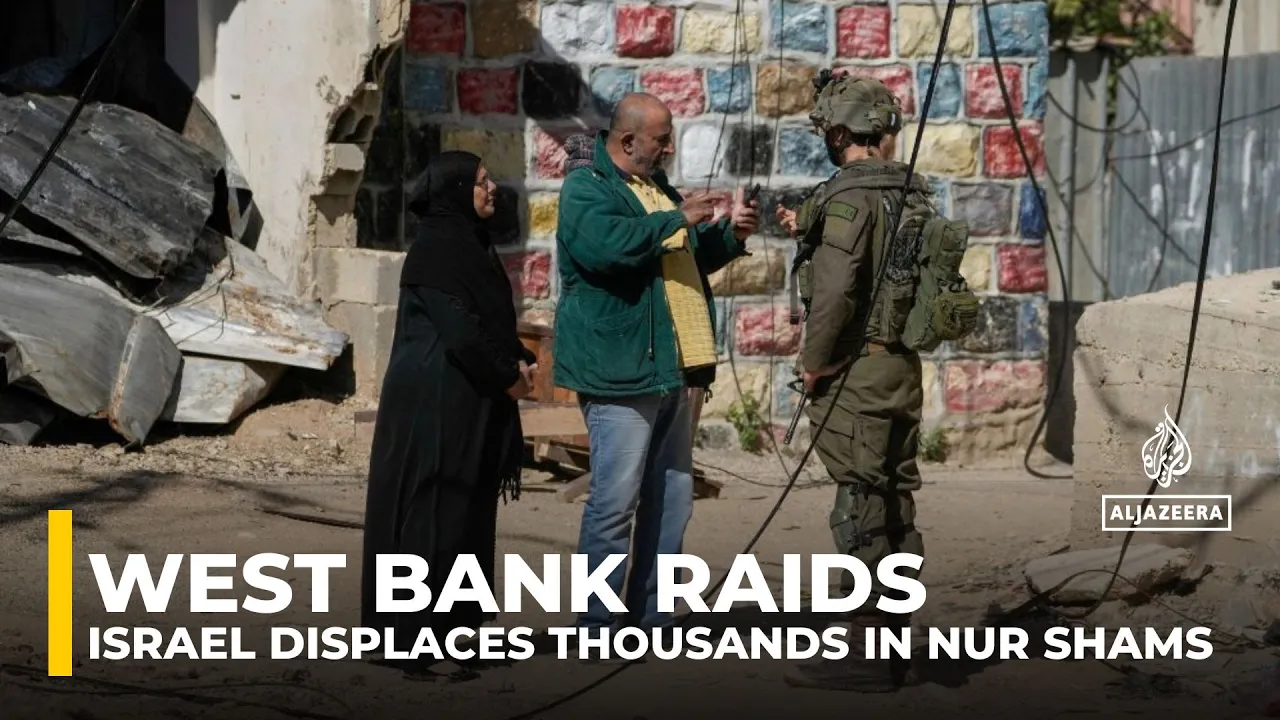UN warns of forcible transfer as Israeli military issues 21 evacuation orders since March, pushing hundreds of thousands of Palestinians into increasingly confined spaces amid ongoing military operations

Israel has dramatically escalated its military operations across Gaza, issuing a wave of evacuation orders that have forced Palestinians to flee their homes and face increasingly dire humanitarian conditions. The orders, which the United Nations has characterized as "displacement orders," have resulted in the forcible transfer of civilians into ever-shrinking spaces with limited access to essential services.
Key Developments in Gaza Evacuation Crisis
Since March 18, 2025, Israel has issued 21 evacuation orders covering vast areas of Gaza, including a March 31 order encompassing almost all of Rafah, the southernmost governorate OHCHR1. These orders have coincided with large-scale ground operations and airstrikes, pushing civilians into increasingly precarious situations.
The most recent evacuation orders targeted eastern Gaza City on April 11, including several areas that had previously been declared evacuation zones New York Times2. Just a day later, on April 12, the Israeli military issued another evacuation order for residents in large parts of Khan Younis ahead of planned strikes, following rocket fire from southern Gaza Yahoo News3.
According to CNN's tally, these evacuation orders since mid-March have encompassed large parts of Gaza, leaving Palestinians with fewer safe areas to seek shelter CNN4. The Israeli military has described some evacuation notices as "final," instructing civilians to move to shelters in designated areas such as the western part of Khan Younis.
Between March 18 and April 9, 2025, there were at least 224 incidents of Israeli strikes on residential buildings and tents housing internally displaced persons, raising serious concerns about the safety of civilians even in areas designated for evacuation OHCHR1.
Global Reactions to Forced Displacement
The United Nations has been unequivocal in its condemnation of the evacuation orders. The UN Human Rights Office stated that the nature and scope of these orders "raise serious concerns that Israel intends permanently to remove the civilian population from these areas in order to create a 'buffer zone'" OHCHR1.
UN High Commissioner for Human Rights Volker Türk emphasized before the UN Security Council last week that "there is no military path out of this crisis" and called for all parties to focus on achieving a ceasefire rather than "seeking to justify the prolongation of senseless violence" OHCHR1.
According to Jonathan Whittall, a senior UN humanitarian official cited in a Security Council briefing, the successive evacuation orders have left approximately 64 percent of Gaza either under evacuation orders or falling within what Israel claims as a "buffer zone" Security Council Report5.
The Daily Press Briefing by the Office of the Spokesperson for the UN Secretary-General also highlighted that the UN Human Rights Office believes these evacuation orders may constitute forcible transfer, which is a grave breach of the Fourth Geneva Convention and a crime against humanity under the Rome Statute UN Press6.
Expert Insights on Legal and Humanitarian Implications
Legal experts and humanitarian officials have raised serious concerns about Israel's compliance with international humanitarian law. While Israel, as an occupying power, can lawfully order temporary evacuations of civilians under strict conditions, the current pattern of evacuation orders suggests a more permanent displacement.
UN High Commissioner for Human Rights Volker Türk has emphasized that "The only way forward is a political settlement, based on two states living side by side in equal dignity and rights, in line with UN resolutions and international law" OHCHR1.
Human rights organizations have also weighed in on the situation. A Human Rights Watch report based on interviews with displaced Palestinians in Gaza described their situation as "hopeless, starving, and besieged," documenting patterns of forced displacement Human Rights Watch7.
Médecins Sans Frontières (Doctors Without Borders) has warned that the evacuation orders "threaten to exacerbate the humanitarian catastrophe in Gaza" and called for Israeli forces to urgently halt these orders, ensure the protection of civilians, and allow desperately needed humanitarian supplies Doctors Without Borders8.
Future Implications of Continued Displacement
The ongoing pattern of evacuation orders and military operations has several alarming implications for the future of Gaza and its inhabitants.
The cumulative impact of Israeli military operations in Gaza raises serious questions about compliance with international humanitarian law, with the UN Office expressing concern that "Israel appears to be inflicting on Palestinians in Gaza conditions of life increasingly incompatible with their continued existence as a group in Gaza" OHCHR1.
The humanitarian situation continues to deteriorate, with aid delivery facing significant obstacles. Between April 3 and 7, out of 36 planned aid movements across the Gaza Strip that were coordinated with Israeli authorities, 25 were denied access OCHA oPt9. This exacerbates the already critical shortage of food, water, medical supplies, and shelter materials.
Israel's Defense Minister has announced that the military will soon "vigorously" expand its offensive throughout most of Gaza BBC News10, suggesting that further evacuation orders and military operations are likely in the coming weeks. This expansion threatens to displace even more Palestinians and further strain the limited humanitarian resources available.
The Israeli military's warning of using "extreme force" against any area from which rockets are launched Yahoo News3 indicates a potential for continued high-intensity operations that could result in additional civilian casualties and infrastructure damage.
Humanitarian Crisis Deepens Amid Repeated Displacements
For many Gazans, the latest evacuation orders represent yet another forced displacement in a series of moves that have shattered communities and separated families. People who have already been displaced multiple times are now being forced to relocate again, often with minimal possessions and dwindling resources.
"The increasing issuance by Israeli Forces of 'evacuation orders' – which are, in effect, displacement orders – have resulted in the forcible transfer of Palestinians in Gaza into ever shrinking spaces where they have little or no access to life-saving services," stated the UN Human Rights Office OHCHR1.
The UN humanitarian affairs office (OCHA) reported that more than 2,000 people were impacted by a single new evacuation order in Khan Younis in late 2024 UN News11, highlighting the continuing pattern of displacement that has now accelerated in 2025.
As the evacuation orders continue and military operations expand, the fundamental question remains: how much more can Gaza's civilian population endure, and what long-term solutions can address the humanitarian crisis while ensuring security for all in the region?

